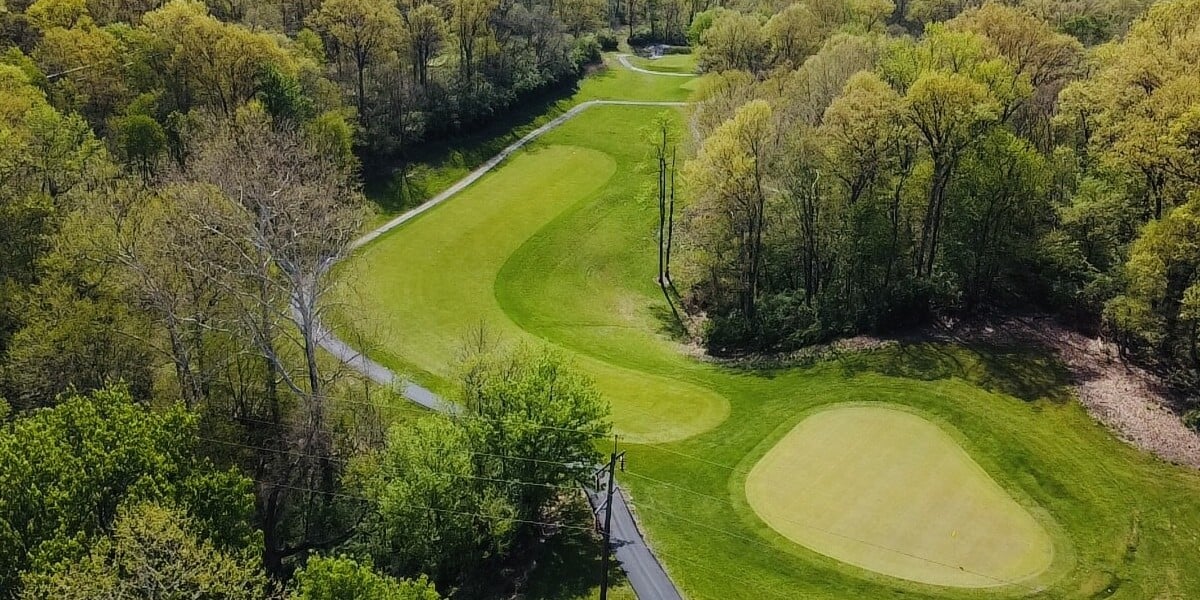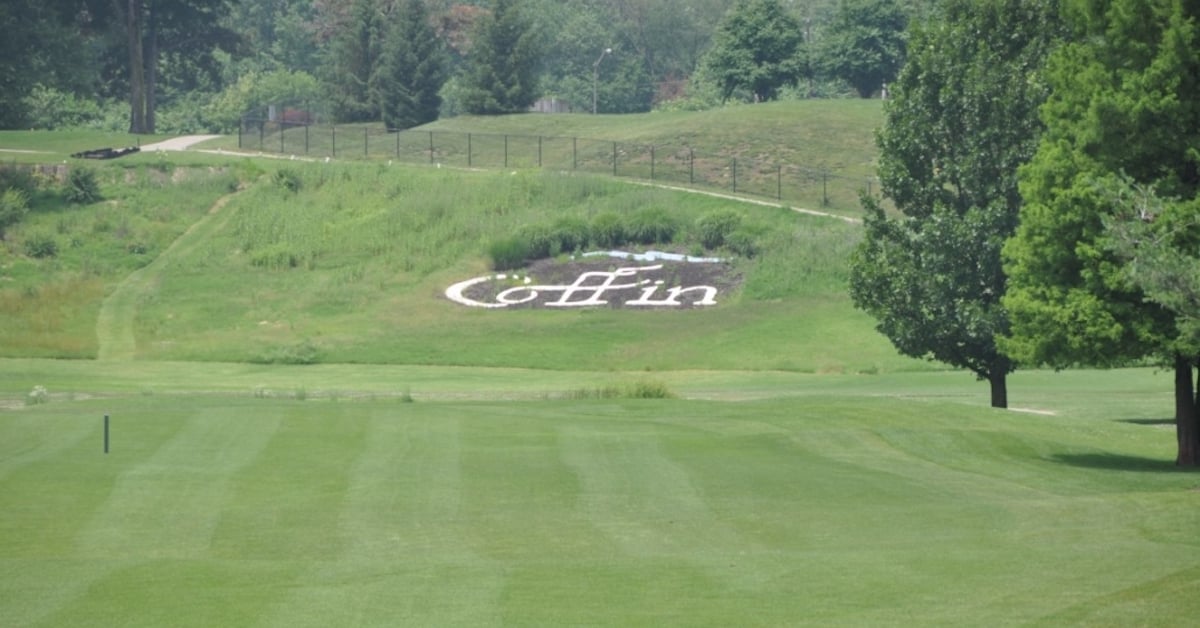
A grizzly old Irish caddie or it could’ve been one of my playing buddies after a few beers and a particularly poor tee shot once said that adversity is just another name for the game of golf. Either way, it wouldn’t be much fun to play a layout that didn’t have hazards and design elements that can occasionally cause grief and hardship.
However, a lot of the golf courses built during the golf construction boom of the 1990s and early 2000s pushed the envelope so far as to make them unrealistically difficult for the average player. Fortunately, Rick Jacobson didn’t fall into that trap when he designed Bull Run in Haymarket, VA. The truth is, the novelty of playing a “tricked up” track wears out pretty quick. It’s those layouts like Bull Run that offer a good mix of easy, medium and difficult holes that generate the most repeat business and stand the test of time.
The course is set in the foothills of its namesake, Bull Mountain, where the Battle at Thoroughfare Gap played out during the Civil War. It’s here, along the shadows of its eastern toe and it’s hollows, that slaves fleeing bondage via the Underground Railroad made their way north. Today, Bull Run occupies 450 acres of horse country, nearly triple the amount of land typical courses cover. The routing of the 18 holes traverses what seems like miles of undeveloped scenic meadows, ponds and woodlands. In fact, Bull Run is surpassed only by the beauty that surrounds the course. It’s this huge natural canvas that allowed Jacobson to preserve the look of the land and create a layout selected by Golf Magazine as “Best New Public Course in Virginia” in 1999.
Jacobson, a Chicago-area architect who worked for Jack Nicklaus Design Company before starting his own firm, hit the ball on the center of the clubface when describing Bull Run’s player-friendly approach: “I don’t drive the ball that straight myself, so it’s a course where you can spray it a little and not be punished too severely,” he said upon its debut. Most of the fairways are wide and done in a concave/convex shape that tend to steer the ball toward the center.
There’s an excellent mix of open and tight landing areas, but never that pit-in-the-bottom-of-your-stomach feeling that your tee shot requires a perfect swing every time.
If played from the back tees, the 6,961-yard, par-72 layout is plenty difficult enough to challenge accomplished players. Move up a box or two, however, and the shorter hole lengths and tee shot angles make finding the landing zones much easier. Most of these areas are defined by grass hollows, bunkers or trees and provide excellent views of where your next shot is supposed to land. In another nod to the recreational player, many of the greens include run-up or bail-out areas even where the hazards look daunting.
The front nine begins in wide open spaces before taking golfers on a scenic tour through beautiful hardwoods. It then winds its way back into the clearing by the time you reach the clubhouse turn. The side begins easy enough with a par 4 that offers wonderful views of the surrounding bluffs, as well as the water that separates the tee from the fairway. It measures 383 yards and fortunately the carry over the pond isn’t long enough to make the normally frog-in-the-throat first shot of the day too difficult to swallow. The green slopes back to front and is very accessible with no bunkers to contend with. It’s a good first hole that eases you into the round.
Water comes into play again at No. 2, a straightaway par 5 (583 yards from the back tees and 406 from the forward). Only one pond/lake was in existence when the course was built, with two manmade water hazards added by Jacobson during the construction process. Reachable in two for longer hitters, it’s another “scorable” hole as long as you avoid the water to the right of the green.
The character of the layout changes course at No. 4, a 399-yard par 4 and the second hardest hole on the opening loop. The transition from a mostly open setting to tree-lined fairways is flawless, with the tee shot played over wetlands to a raised fairway that moves right to left. Stray too far either direction and you’ll be chipping out of the woods. On a brighter note, No. 4 gives you one of the best views of Bull Run Mountain.
The toughest hole on the front is No. 9, a par 4 that stretches over 430 yards from the back tees. Returning to a much more open setting, the hole tempts players to try to clear the pond on the right by cutting the dogleg. The smarter or safe tee shot is left toward a pot bunker in the fairway. The mindset for most players should be to treat the hole more like a short par 5, using a fairway wood on your second shot. There are bunkers and water to the right of the green, making the bailout area on the left and short of the green an inviting target.
After passing the clubhouse you start the back nine with a number of nicely wooded holes before the course opens up again at No. 13, a fabulous par 4 just under 400 yards. The tee shot is played to a fairway the width of a football field. However, there is a big pond on the left and fairway bunkers in the middle. Check the pin placement because that will help you decide which side to place your tee shot to set up the best approach angle to the green. Number 17 is another excellent par 4 that cuts left to right with a trio of fairway bunkers on the far side. The second shot is downhill, making club selection a real head-scratcher if the wind picks up.
Number 18 easily qualifies as one of the best par-5 finishing holes in the Northern Virginia region. The hole plays a whopping 553 yards from the back tees but a lot shorter if you’ve got ice water running through your veins. The shortest route is to hug the left side of the fairway off the tee and catch the downhill slope of the landing area. Do that and get a generous roll and you have a decision to make: do you attempt a heroic second shot and try to fly the pond in front of the green or lay up in front of the water leaving a delicate short iron or wedge on your third? Either way, it’s a perfect risk-reward hole and a fitting ending to what just might’ve been one of the most enjoyable rounds you’ve ever experienced.
In the highly competitive Washington, DC, golf market, Bull Run sets the bar (very high) when it comes to quality of design, conditioning and amenities. With history literally on its side, it bridges the gap between good and not-so-good golfers with a layout that caters to both. And it does it in a idyllic setting that should make you feel good about your game no matter the final score.





